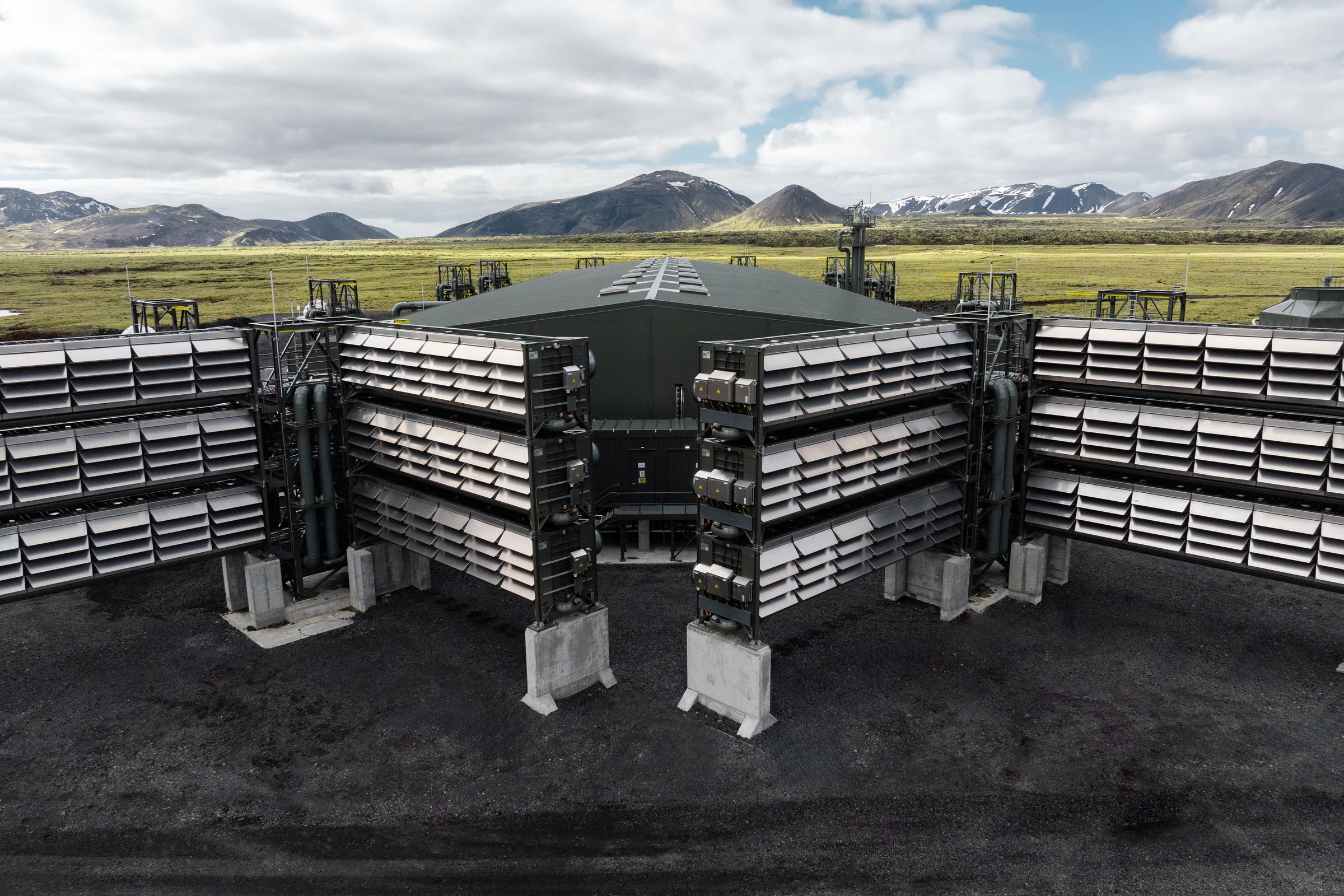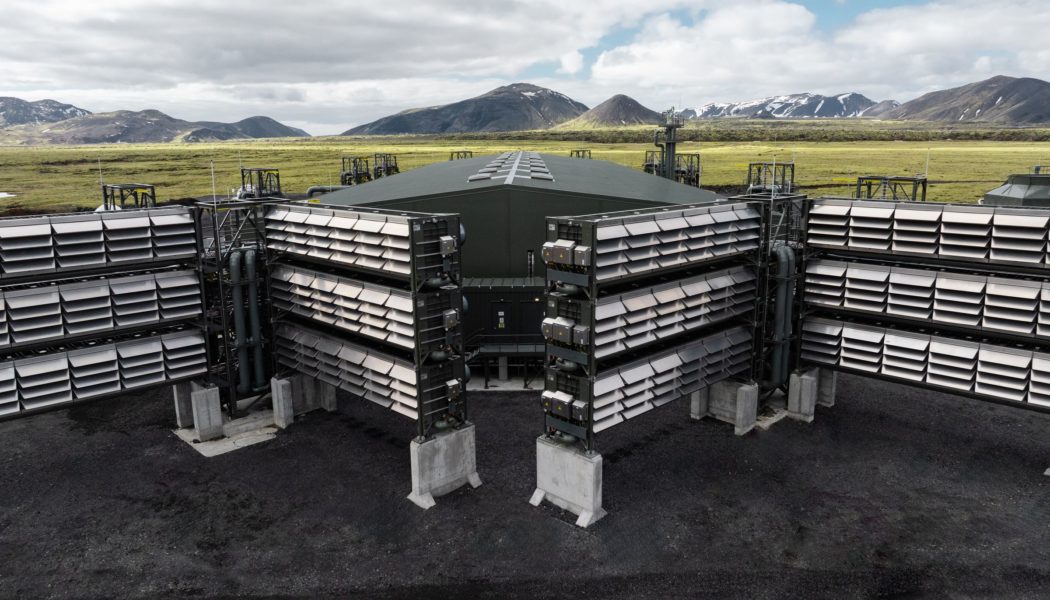A big new facility built to take carbon dioxide out of the atmosphere opened up in Iceland. It’s a stepping stone to bigger plans in the US.

Mammoth, the largest industrial facility yet built to filter carbon dioxide out of the air, just powered up in Hellisheiði, Iceland. It’s run by Swiss climate tech company Climeworks, whose clients include JPMorgan Chase, Microsoft, Stripe, and Shopify, among others.
It was the latest industrial plant built with the purpose of sucking carbon dioxide out of the air, a process called direct air capture (DAC) — with more facilities planned around the world. DAC is supposed to be a way to fight climate change by getting rid of greenhouse gas emissions that have built up in the atmosphere, but the process still has to prove that it can scale up enough to have a meaningful impact.
Mammoth is the biggest DAC plant running yet. But in the grand scheme of things, it’s relatively small compared to other projects in the pipeline. Climeworks’ operations in Iceland were meant to show the world that this technology can work. Now, it’ll have to see if it can replicate that early success in a growing market in the US.
Back in 2017, Climeworks became the first company to suck carbon dioxide out of the air and sell it as a product used in fizzy drinks and in a greenhouse. It took a big step forward in Iceland in 2021, where it opened the DAC plant Orca to start capturing CO2 and permanently sequestering it underground for clients, including Microsoft.
Orca was the biggest DAC plant in operation until now. Mammoth will be able to capture nearly 10 times as much CO2 as Orca once it’s fully operational, around 36,000 tons of carbon dioxide a year. That’s still not a lot of carbon, considering Microsoft alone emitted close to 13 million metric tons of carbon dioxide in 2022.
But Climeworks and similar climate tech companies have much larger ambitions in the US. The industry gets a lot of policy support in the US, with the Biden administration funneling $3.5 billion of federal funds from the Bipartisan Infrastructure Law into developing at least four DAC hubs.
Two large projects have been selected so far to receive up to $1.2 billion of funding. That includes an initiative in Calcasieu Parish, Louisiana using DAC technology from Climeworks and a California-based startup called Heirloom Carbon Technologies. Microsoft is already one of the first customers for that Louisiana hub. Each federally funded hub is supposed to have the capacity to capture at least a million metric tons of CO2 a year. Climeworks set up a new headquarters in Austin, Texas earlier this year to speed up growth in the US.
In Iceland, Climeworks’ DAC facilities are made up of modular “collector containers” with fans that suck in air. The air passes over a special filter that absorbs carbon dioxide. Once the filter is fully saturated, it’s heated up to about 100 degrees Celsius (212 degrees Fahrenheit) to release the carbon dioxide. Climeworks partners with the company Carbfix to keep the captured CO2 from escaping into the atmosphere again by locking it away in Iceland’s basalt rock formations. They mix the CO2 with water and then pump that slurry deep underground where it eventually becomes solid rock.
Climeworks benefits from abundant geothermal energy and natural underground storage sites in Hellisheiði. That allows it to run on renewable energy and avoid building out a large network of pipelines to transport the captured CO2. That might not be the case for hubs in the US, where any plans to build out DAC plants already face concerns about high costs and polluting energy use. DAC companies are also likely to face opposition to new pipeline construction from nearby residents.
Mammoth, in the meantime, is still a work in progress. Just 12 modular containers have been installed at Mammoth for now, and Climeworks says it plans to install 60 more to complete construction this year.









